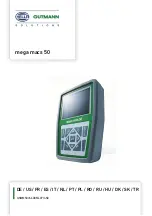
7
1. Identify the Vein and Insertion Site
A. Apply a tourniquet above the anticipated insertion site.
B. Select a vein based on patient assessment. Recommended
veins are basilic, cephalic and median cubital veins.
WARNING:
(Pediatric) Insertion techniques and
placement locations are often modified according to the size
and developmental age of the child. Only clinicians
experienced in proper positioning and placement of midlines in
pediatric patients should place this catheter in this patient
population.
Caution:
Placement of the PowerMidline™ Catheter above antecubital fossa is
recommended.
Caution:
Avoid placement or securement of the catheter where kinking may occur
to minimize stress on the catheter, patency problems or patient discomfort.
NOTE:
These catheters feature a reverse-taper catheter design. Taper length and size
should be taken into account when selecting the appropriate vessel and determining
catheter length.
C. Release tourniquet.
D. Assess the selected vein to ensure the vessel size is adequate to accommodate the
catheter being placed.
2. Patient Position / Catheter Measurement
A.
Position the arm at a 90˚ angle.
B. For midline placement, measure to the desired tip
location in the proximal portion of the extremity just
distal of the shoulder and deltoid muscle.
Caution:
The midline catheter tip location should be
at or near the axillary line [INS, 2016].
NOTE:
External measurement can never exactly duplicate the internal venous
anatomy.
3. Skin Preparation
A. Don prep gloves.
B. Apply underdrape.
C. Prepare the site according to institutional policy using sterile technique.
WARNING:
When using alcohol or alcohol-containing antiseptics with polyurethane
midlines, care should be taken to avoid prolonged or excessive contact. Solutions
should be allowed to completely dry before applying an occlusive dressing. Chlor-
hexidine gluconate and/or povidone iodine are the suggested antiseptics to use.
D. Remove and discard gloves.
4. Sterile Field Preparation
A. Apply the tourniquet above the intended insertion site to distend the vessel.
B. Don sterile gloves.


































